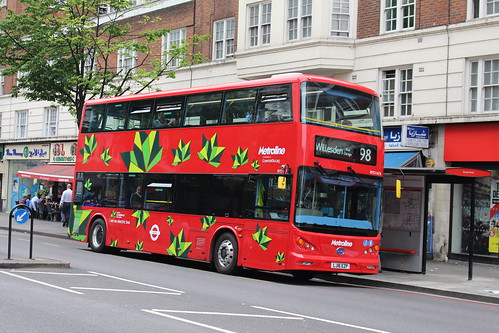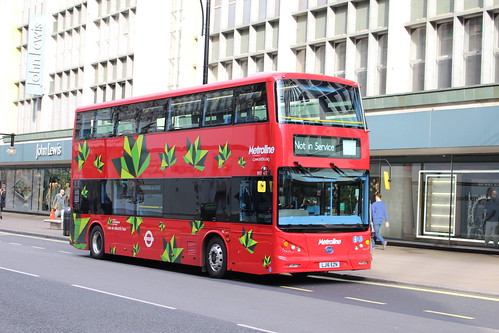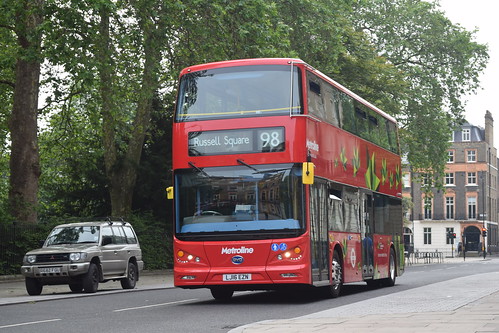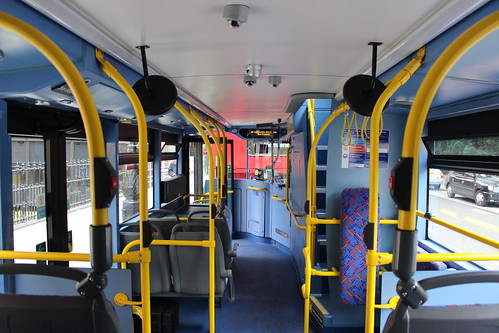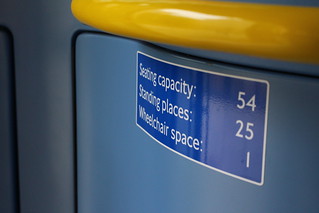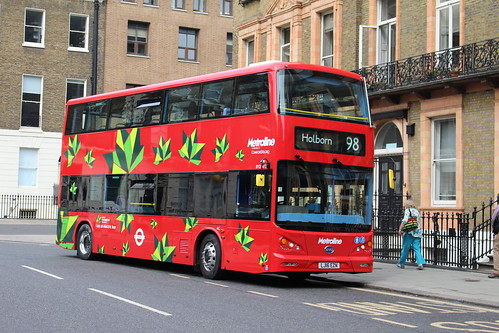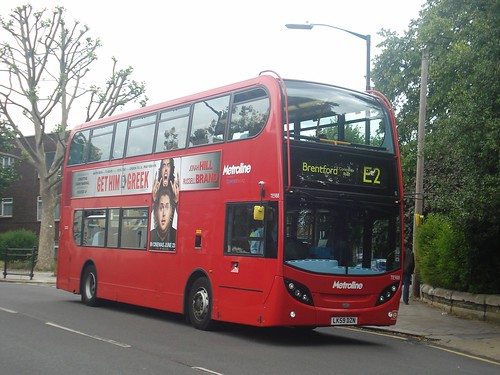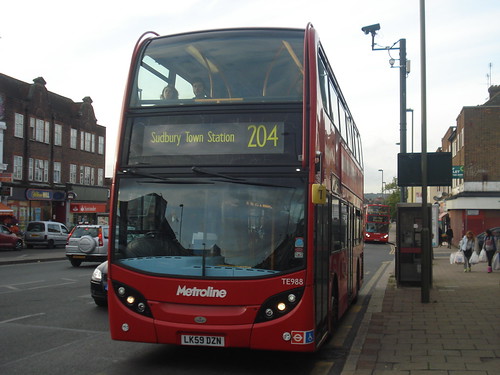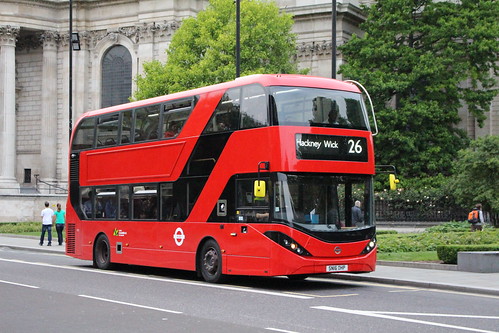
CT Plus 2501 on Route 26, St Paul's Cathedral (© Aubrey)
However, this post will start with the transfer of the 26/N26 to CT Plus. This has brought about interesting blind displays, but here is the first E400H City in service on the 26 on June 10th 2016. No logos or fleet numbers yet.

CT Plus DN33644 on Route 26, Waterloo Bridge (© Aubrey)
Initially, the 26 started its life at CT Plus with hired Tower Transit Enviro 400s intended for the 69, transferring early on 27th February 2016. Yes, it was pretty long ago, but other than "on hire to CT Plus" paper legals on these buses, not too much difference otherwise.
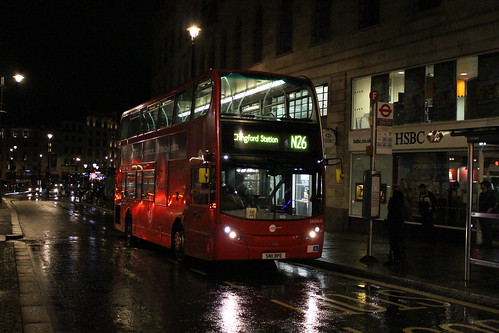
CT Plus DN33635 on Route N26, Charing Cross Station (© Aubrey)
A similar circumstance befell on the N26, which led to the odd Tower Transit vehicle being operated by CT Plus on a CT Plus route. Initially, some Scania vehicles did stray onto the 26, which meant for the first time, company vehicles were used on the 26.
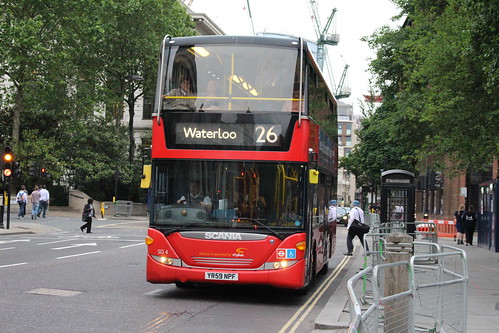
CT Plus SD4 on Route 26, St Paul's Cathedral (© Aubrey)
However, after the first one on the 10th, more and more E400H City buses entered service, until where nearly the whole 26 (and most of the N26) has the new buses, with logos.
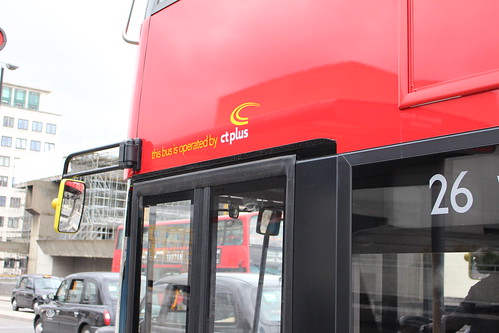
CT Plus logo on 2504 (© Aubrey)
The usual, coloured "this bus is operated by CT Plus" logos are applied. Most drivers wear Tower Transit uniform still. This brings an odd mix of uniform and bus into each other. CT Plus are not new to the Enviro 400 hybrid, having experience with HEA1. The service is not too bad, decently run like it was before. And Shoreditch is still Shoreditch for night life.
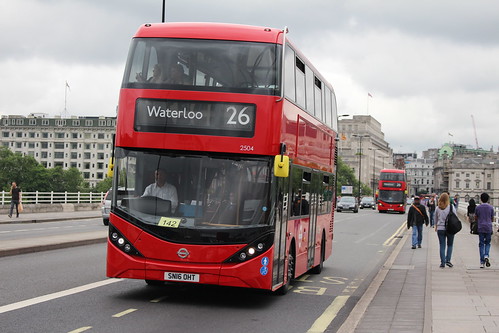
CT Plus 2504 runs ahead of 2501 on Route 26, Waterloo Bridge (© Aubrey)
Apart from bunching that was captured under my lens, the E400H City buses are quite decent. Rides like a typical E400H City, and is a decent bus overall. Presentation for the day service is immaculate once logos have been applied. The buses are in a good condition.
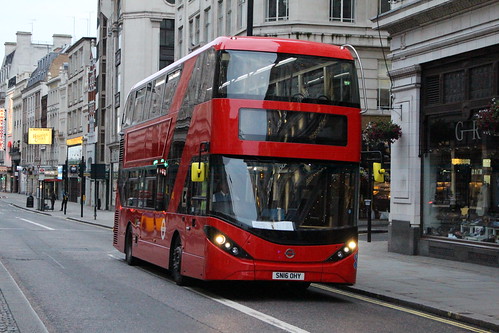
CT Plus 2509 on Route N26, Strand (© Aubrey)
But at night, standards slip. Heavily. The only way you can say it is on the N26 is the little paper handwritten note on the dashboard. The destination piece of paper says:
"TRAFALGAR
WALTHAMSTOW
SQUARE
CENTRAL"
A lot of confusion in my books, definitely, hence not as many people that should have gotten on, did get on. Overall, other than the N26 incident, presentation and performance seems decent for both the 26 and the N26.
Now, to do 69. No, not that.

Tower Transit DH38502 on Route 69, Canning Town (© Aubrey)
The first part to hand over to Tower Transit was the additional, trial, battery-hybrid electric buses on the 69 in November 2015. DH38501-503 initially was supposed to be handed over to Stagecoach but as the 69 was gained by Tower Transit, it made sense to give this errant allocation to Tower Transit to allow the route to be learnt, as well as letting these buses be tested out. They are hybrid buses that rely mainly on electric power from batteries, charged by induction pads at each terminus. Unfortunately, the one at Canning Town has been fitted, and worked on for quite a while, so the buses have been running on more of a hybrid bus system.

Tower Transit DH38503 on Route 69, Stratford (© Aubrey)
These buses are supposed to be in electric mode in more polluted areas, such as where the bus is shown above, in Stratford. However, due to a lack of charging facilities and the traffic on the 69, the buses mainly run as hybrids, rather than in electric mode. Once Canning Town works have been sorted, these buses should be even less polluting than what they currently are.
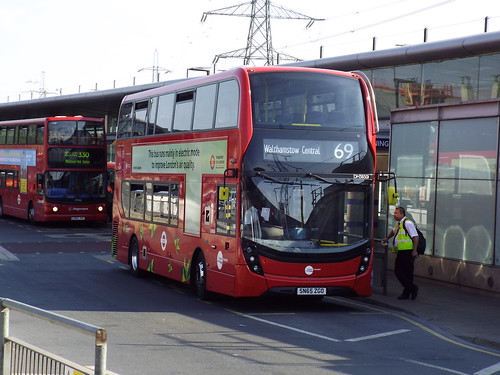
Tower Transit DH38501 on Route 69, Canning Town (© Jacek)
They are a decent ride with high backed seating all around, and an interesting generic interior of blue seats and yellow poles. The buses have now been integrated into the main schedule of the 69, and after an initial spell of not being out after Tower Transit took over, they are now commonly seen on the route.
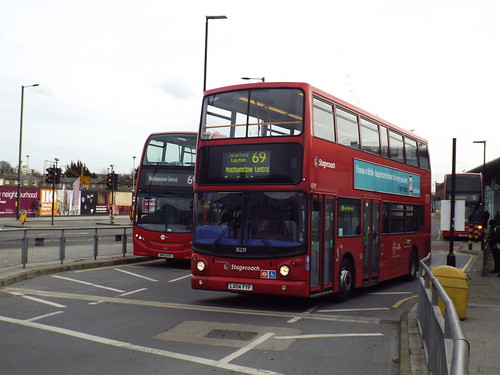
Tower Transit 18239 on Route 69, Canning Town (© Jacek)
The rest of the 69 was handed over to Tower Transit early in February 2016. This meant Stagecoach had to loan its Tridents over for a bit, but Tower Transit also needed to loan some buses to CT Plus for the 26. In a very confusing series of fleet movements, the 69 had the Tridents for a bit, while the 26 soon after had some of its DNs loaned to CT Plus. To allow the Tridents to return early, and cover a few DNs going on loan, some VNs ex-295 went to LI and could be found usually on the 25 or 30. Some weeks later, new VHs arrived at AS allowing their VNWs to be replaced. These VNWs went to the 23, freeing some DNs to go to LI allowing the loaned Tridents to return to Stagecoach. By the start of June the new E40H City for the 26 started to enter service freeing the loaned DNs to return to Tower Transit.
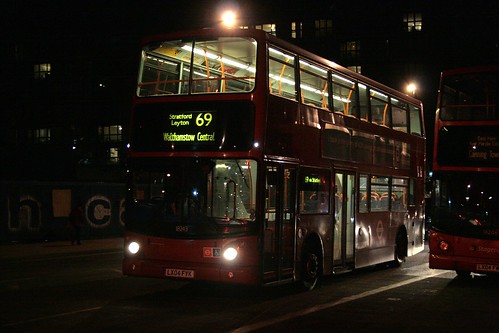
Tower Transit 18243 on Route 69, Canning Town (© Aubrey)
The logos of the Tridents were painted over during the loan. When they returned to Stagecoach, most of them did not return into service, and went to dealerships instead. Enviro 400s were taken to replace these buses.
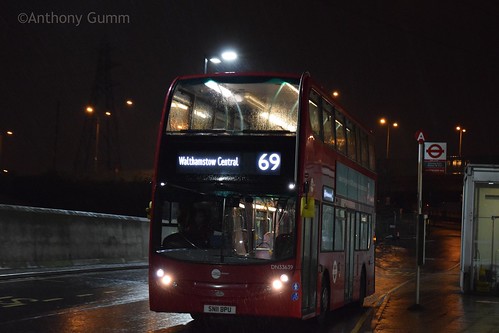
Tower Transit DN33639 on Route 69, Canning Town (© Anthony)
This is now the allocation on the 69. Well, technically, the DNs from the 26 are allocated to the 69, after refurbishment.
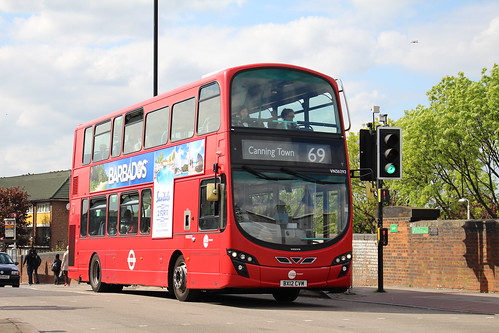
Tower Transit VN36292 on Route 69, Plaistow Station (© Aubrey)
This was one of the Volvo B9TLs that were transferred to LI to cover for loaned Tridents, but it has now returned back to its home on the 266.
Overall, this set of changes was one of the longest to do, and one of the most complicated set of loans but as things settle as the dates get closer to the actual contract change date (as opposed to the earlier handover). All seems well on these changes, so far.

